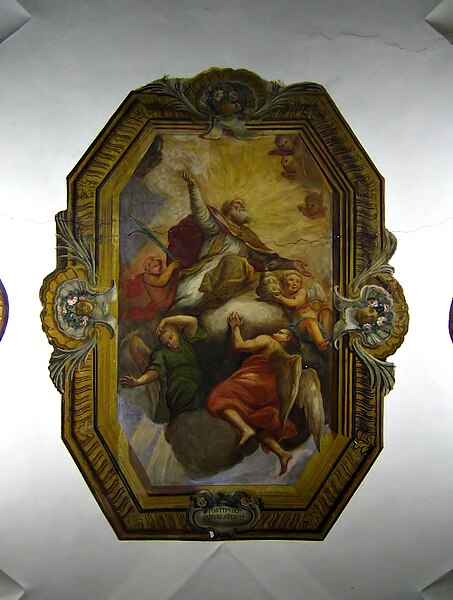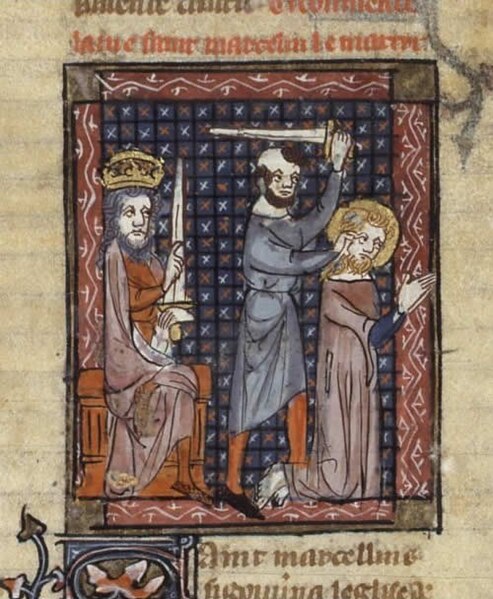Pope Marcellus I was the bishop of Rome from May or June 308 to his death. He succeeded Marcellinus after a considerable interval. Under Maxentius, he was banished from Rome in 309, on account of the tumult caused by the severity of the penances he had imposed on Christians who had lapsed under the recent persecution. He died the same year, being succeeded by Eusebius. His relics are under the altar of San Marcello al Corso in Rome. Since 1969 his feast day, traditionally kept on 16 January by the Catholic Church, is left to local calendars and is no longer inscribed in the General Roman Calendar.
Sacristy ceiling fresco Gloria di San Marcello by Giovanni Battista Ciocchi, San Marcello al Corso, Rome, Italy
Pope Marcellinus was the bishop of Rome from 30 June 296 to his death in 304. A historical accusation was levelled at him by some sources to the effect that he might have renounced Christianity during Emperor Diocletian's persecution of Christians before repenting afterwards, which would explain why he is omitted from lists of martyrs. The accusation is rejected, among others, by Augustine of Hippo. He is today venerated as a saint in the Catholic Church and in the Serbian Orthodox Church.
Medieval miniature showing the martyrdom of Saint Marcellinus


